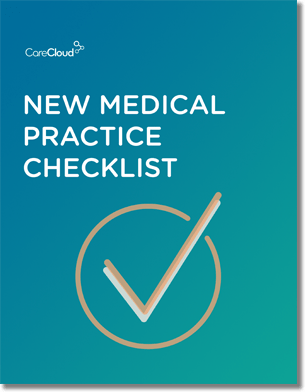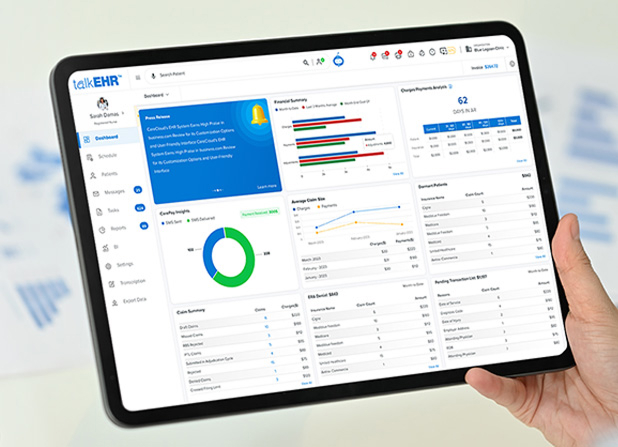In a Fast Company feature titled “Designers Are The New Drivers Of American Entrepreneurialism” last year, Bruce Nussbaum wrote the “growing desire among designers to bring their user focus, strategic vision, iterative methodologies, and propositional thinking […] promises to be transformative and explosive.”
Of course, those in the healthcare technology field know designers play an integral role in EHR usability. However, while ‘usability’ is an oft-used conversational buzzword, its definition – and who gets to decide it – is often a contentious area.
In order to zero in on what EHR usability means, how to assess it and list some of the challenges associated with doing so, PYP enlisted Dr. Kathleen Harder, director of the Center for Design in Health at the University of Minnesota’s College of Design.
What Is Usability?
While critical, usability isn’t always given the same level of attention as software features, functions and technical standards.
According to the HIMSS EHR Usability Task Force, usability is the “effectiveness, efficiency and satisfaction with which specific users can achieve a specific set of tasks in a particular environment.” This perspective should not be solely equated with user satisfaction, which would result in a gross generalization.
An EHR with high usability is easy to use, effective, intuitive, forgives mistakes and encourages users to perform important tasks efficiently and quickly. If tasks like data retrieval, crosschecking, organization, summarizing or calculating can be done in the background, then accuracy is improved and the user’s mind is less cluttered.
When speaking to vendors, ask them about what makes their systems intuitive. Evaluate demos carefully, keep track of the amount of clicks it takes to achieve relatively simple tasks, and try to think of how much time it will take for a trained healthcare provider at your practice to carry out essential tasks in a timely manner.
What Goes Into Good Usability?
Since usability stems from understanding the needs of users, using established design elements and performing user testing further ensures usability.
In order to assess usability, we need to focus on three basic criteria:
- Effectiveness (success/failure)
- Efficiency (time to completion)
- Error Prevention
“I want to note the importance of lumping ‘effective’ and ‘efficient’ together,” said Harder. “Effective cognitive performance first, and efficiency will follow.”
Dr. Harder is an expert on using the strengths and weaknesses of human information processing to design health systems that are “cognitively digestible.”
“If you look at [EHR design] from a human information processing perspective, errors will be diminished and the system will be way more efficient,” said Harder. “You design these systems in such a way that [healthcare providers] won’t have to keep their heads in the computer as long, which leads to more bedside time providing patient care.”
Achieving effectiveness and efficiency in EHR design comes about as a result of fostering human cognitive performance, which logically contributes to error reduction.
“It’s good to bring in [healthcare providers] who are fresh and have keen insights into the care they are providing and how technology can enhance their process,” said Harder of strategies to reduce errors.
Designers are imperative to good usability. As communicators, designers think about how information must be presented, and understand how changing information in subtle ways has a huge impact on cognition.
Naturally, good usability is imperative to the health of your practice. Think of the level of efficiency achieved at your practice via your current system.
Will EHR adoption maintain or better your rate of error? Will your new EHR help your staff keep track of complex routines? Will your employees waste too much time and thought being bogged down by a complicated EHR?
Challenges of EHR Usability
Achieving excellent usability in EHRs is daunting, given the information needs of administrative, financial and clinician groups. Software needs vary depending on dozens of physician disciplines, which often need different software interface design.
Furthermore, routine responsibilities are often mired by financial issues and vary depending on the insurer. It’s also difficult for developers to gain access to clinician users for testing and feedback, and physicians’ confidentiality or workflow concerns may further constrain research.
Perhaps not surprisingly, studies funded by the Agency for Healthcare Research and Quality (AHRQ) have found that very little systematic evidence has been gathered on the usability of EHRs in practice.
Despite the obstacles, webcams, wireless networking, remote testing software and external video recorders make it easy to test in live clinical settings, which allows designers and developers to zero in on flaws and other system mishaps.
Likewise, Dr. Harder stresses the need to include users from the initial stages of EHR development, but highlights the trickiness behind balancing user and designer input.
“Good EHRs include the user from the very beginning, from concept development through all stages of the design cycle until the end,” said Harder. “You query them about what they really need to provide great patient care, but the user can’t provide all the information. You need a designer in the mix to make sure someone is thinking about how this information must be presented.”
Perhaps ironically, a number of miscommunications arise within the EHR development unit, particularly between designers and developers. The platform on which the system is built can hinder usability, often due to budgetary and/or knowledge limitations, and undermining conflicts many healthcare providers experience with EHRs.
It is then, to a certain extent, a designer’s responsibility to present their case and help developers open their eyes.
“[Designers and developers] need to speak with each other,” said Harder. “Having meaningful conversations about how to improve their product is essential.”
How do you think of EHR usability? Have you had run-ins with non-usable EHRs?

Do you know what you need when setting up a new medical practice?




